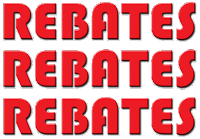The Leaves Aren’t the Only Thing Falling. So Is Your Excuse to Avoid Planning
By Frank Hurtte
It’s November.
Out here in the Midwest, Iowa’s trees are showing off, fiery reds, deep oranges,
and every gold shade ever invented. A little warmth still hangs on, but
Thanksgiving, December, and the holidays will sprint by before we know it. And
with them come two unavoidable realities: yard cleanup and annual planning.
As I write
this, I can practically feel the blister forming from the rake I’ll be
wrestling with on some future Sunday. You can recruit the neighbor kid
for yard duty. Unfortunately, you won’t find an $8-an-hour stand-in for your
End-of-Year Planning. But good news: planning doesn’t have to be the monster
lurking behind the garage. Let’s break it down and remove the dread.
Start Early
Many leaders
wait until the last moment to tackle planning. Some procrastinate so
masterfully, they’ll reorganize their desk drawer before facing it. But
starting early prevents last-minute panic and gives you space to think, really
think, about the year ahead.
Break
Planning Into Bite-Sized, Delegable Pieces
You don’t have
to shoulder the whole thing alone. Divide the plan into key segments, pieces
your team can contribute to meaningfully:
- Inside Sales / Customer Service
- Marketing & Events
- Non-Selling Expenses
- Demo & Equipment
- Warehouse & Delivery
- Employee Benefits
- Employee Training
Who on your
team can provide real insight?
A lead Inside Sales rep could outline customer service improvements. A delivery
driver might spot logistical inefficiencies long before the leadership team
does. Your marketing person knows what events cost and when they’re feasible.
Delegate the information gathering.
Accounting can
help too. Ask for updated breakdowns of rent, utilities, phones, internet,
taxes, insurance, and other operating expenses. Push them a little further:
“What increases should we expect next year?” No one has a perfect crystal ball,
but educated estimates are far better than guesswork.
Standardize
the Format
Give every
contributor a common format. Ask for numbers using the same categories as your
financial statements. Provide a spreadsheet template so everything can roll up
neatly into one final document. Standardization saves hours on the back end.
Evaluate
Your Team
People are your
most valuable asset, but only if you truly understand their strengths and gaps.
Managers should assess each direct report with an eye toward:
- Performance evaluations
- Planned compensation adjustments
- Training needs
- Skills development
This “inventory
of talent” ensures your plan aligns with the actual capabilities of your team.
Sales
Forecasting: The Big Kahuna
For
distributors, sales and gross margin forecasting drive the entire plan. We
recommend the Who–What–Why forecasting method:
- Give salespeople last year’s
customer sales
broken down by product category.
- Salespeople review each account and estimate expected growth or
shrinkage, identifying what will change and why (new
projects, competitive pressures, new products, customer expansion, etc.).
- Roll up the numbers by salesperson and compile the
company-wide forecast.
- Review projections together. Some reps love the “sandbag early,
celebrate later” approach. That needs to be addressed individually. This
process enables real coaching and mentoring.
Provide every
salesperson with the same spreadsheet and instructions. In our experience, a
rep with pre-formatted data can produce solid projections in just a couple of
hours.
Final Words
Would you
invest in a business with no projections, no forecast, and no operating plan?
Of course not, so why run one that way?
If you already have a planning process in place, start early, involve your team, and make this the best version yet.
I want
a customized jump-start. River Heights Consulting offers one-on-one planning assistance and training
calls. Reach out today, and we’ll help your team build a winning plan.
About the Author
Frank Hurtte combines a lifetime in distribution with a passion
for teaching the next generation of industry leaders. As founder of River Heights Consulting, he helps distributors strengthen their sales teams, sharpen their strategy, and build plans that drive long-term profitability. Frank is a speaker, author, and trusted advisor across the industrial world.TL;DR
Annual planning doesn’t have to be painful. Start early, split the workload into clear segments, and delegate information gathering to the people closest to the work. Standardize the format, evaluate your team, and use the simple Who–What–Why method to build accurate sales forecasts. With a structured, distributor-focused approach, you can turn planning season into a strategic advantage instead of a yearly headache.
...





Comments